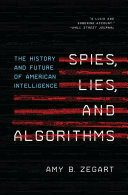Editor’s Note:
With the so-called ‘peace process’ underway, Ukraine’s defiant stance against Russia is center stage. So we wanted to dig deep into history to explain where it all originates.
We have a print of ‘The Reply of the Zaporizhzhian Cossacks’ in our office, because it represents our ethos: to speak truth to power, and to tell off those who seek not to build or collaborate but to seize and steal.
We need your help to keep doing that. Upgrade today to get access to all our work!
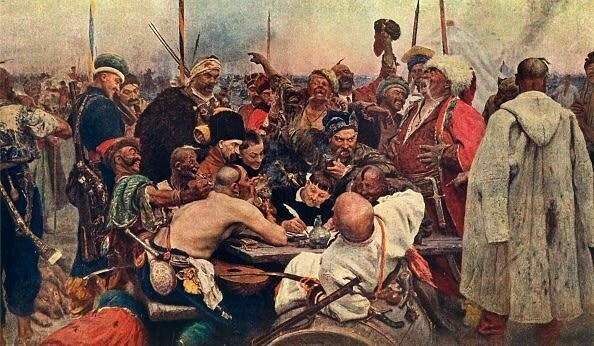
“You sit in a hole like a devil, or a hen-thief, who changes his nest in the war to another, one which shows that you are a fool.”
The painting is nearly 150 years old, but the scene it depicts is familiar: A group of fierce Cossack warriors sit at a table surrounding a man acting as their scribe.
The writer is penning a letter to a powerful sultan who’s demanded they submit or face the wrath of his army. But the men’s faces betray no fear; instead, they laugh uproariously as they deliver their official response to the ultimatum, taunting the sultan as, among other things, a “devil,” “hen-thief,” and a “fool.”
With a change of only perhaps attire, the scene in the painting could easily be of current events. The sultan, a personification of a powerful nation trying to conquer Ukraine, could be Vladimir Putin, and the Cossacks – the entire Ukrainian nation.
One group in particular wants to make sure Ukrainians remember the lessons of the Cossacks now. ‘Cossack’ comes from Turkic languages and translates as ‘free person’. They were a social and military community whose state thrived in the 16th-18th centuries on the territory of modern Ukraine and southern Russia.
Vadym Vasylchuk, an officer of the Armed Forces of Ukraine, founded the ‘Spas’ Brotherhood of Cossack Martial Custom to keep Cossack traditions alive – and to remind Ukrainians that it’s in their history to never submit.
Initially founded in 2008, the group had as many as 700 members at its peak in 2014, when Russia unleashed its first phase of the war against Ukraine. Now it’s under 100 in the Kyiv region – most of the members are in the army or volunteering.
Following Cossack traditions plays an important role in raising national spirits, Vasylchuk said. That’s especially true as the international community pressures Ukraine to make concessions to Russia to end the war.
During a meeting with Zelensky last week, Trump expected Kyiv to make territorial concessions in order to eventually reach peace. But Zelensky held firm, saying Ukraine would not agree to the demands of occupiers who seek to seize its land.
In many ways, this was the defiant Ukrainian spirit in action – a spirit that has endured for centuries, dating back to the time of the Cossacks.
Vasylchuk became interested in the history of the Cossacks while still at school. He read famous historical novels about the events of the Cossack state and its struggles, and he began to admire the image of the Cossack warrior — a man ready to lay down his life for the choice to be free.
He began practicing Cossack martial arts in the early 2000s. Famous Ukrainian writers often described the historical events of the Cossack era as a time of glory for the Ukrainian state, focusing on the Cossacks' struggle for independence and the establishment of the Hetmanate, the Cossack state which existed in the 17th-18th centuries.
Ukraine is still fighting for its independence now, albeit in a different form, Vasylchuk noted, and this parallel inspired him to create a brotherhood.
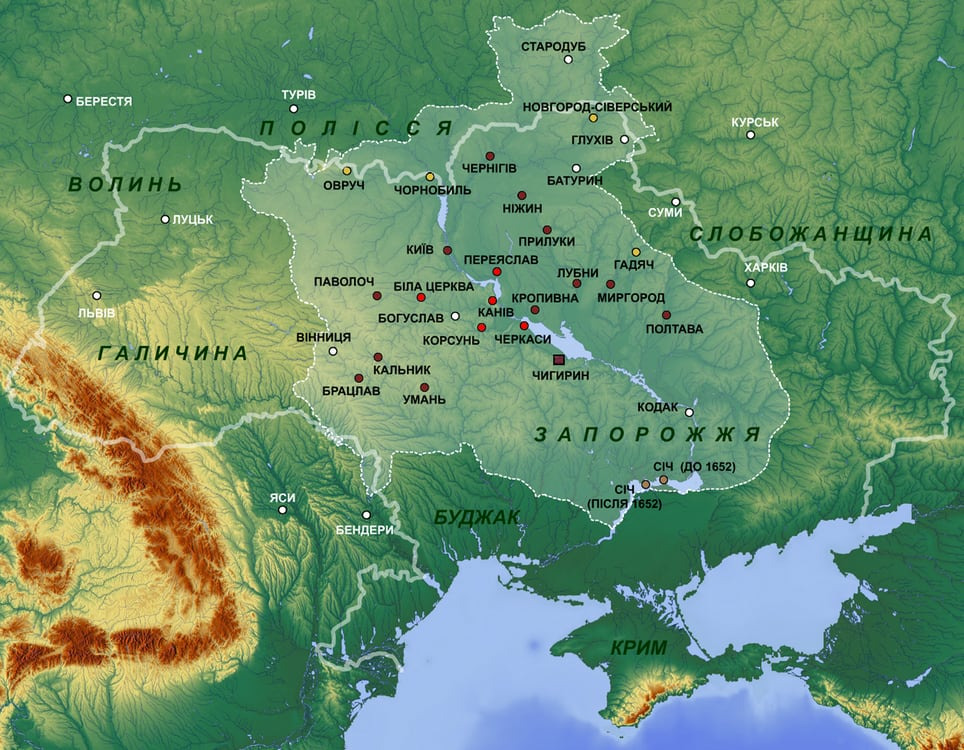
Surrounded by like-minded people, he wanted to unite them for a common goal—to spread knowledge about the history of the Cossacks, their way of life, and the structure of their state.
Anyone can become a member of the brotherhood. Women couldn’t join the historical Cossack army, but the modern ‘Spas’ brotherhood accepts women to its ranks.
The brotherhood engages in historical education, hosts lectures, and promotes Cossack traditions. The brotherhood also tries to adhere to the Cossack way of life — electing elders and reconstructing the Cossacks' way of life. They also organized Cossack-themed events gathering together thousands of people.
The rise of the Ukrainian state is associated closely with the Cossacks. In the mid-17th century, the Cossacks created their own state based on a military structure on the territory of modern central and eastern Ukraine.
They defended it from enemies who wanted to seize new lands for themselves. At the head of this state was the hetman, a military and state leader. Ukrainian presidents who’ve led the country during today’s war with Russia are often compared to modern-day hetmen.
(The Counteroffensive has previously written a story about Zelenskyy’s nicknames: one of them is ‘hetmen’)
The Cossack state, in what is now Ukraine, constantly fought against occupiers who constantly tried to take over. The main threat to the Cossacks came from the Polish-Lithuanian Commonwealth, the Russian empire, and the Ottoman empire, which tried to break up the Hetmanate from all sides.
The Cossacks won significant victories and had periods of statehood, but as a result of internal divisions and being outnumbered, their state was ultimately subjugated to the Russian Empire.
However, they always maintained their stubborn, rebellious, obstinate ways. It is this spirit that was captured by the artist Ilya Ripyn in the painting above.
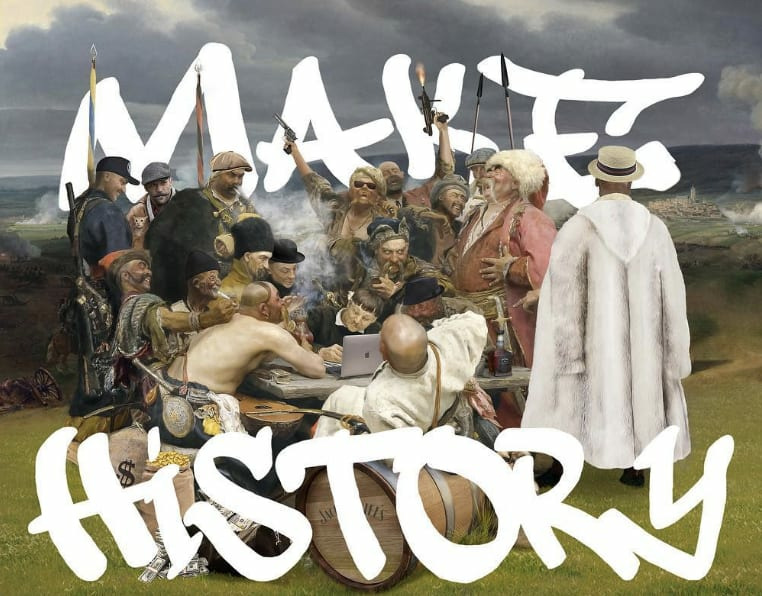
Ripyn was long mistakenly considered a Russian artist, despite his Ukrainian origin. One of his most famous paintings captures perhaps the most vivid reflection of Ukrainian resistance: ‘Zaporozhian Cossacks Write a Letter to the Turkish Sultan.’
There are two versions of the painting, both of which are originals; one is located in St. Petersburg, Russia, and the other was until recently displayed in the Kharkiv Museum before being transferred to the Lviv Gallery for restoration and storage.
It depicts a scene in which one of the Cossack leaders, Ivan Sirko, writes a letter to the Ottoman sultan in response to his demand to surrender without a fight.
Instead, the Cossacks call him a “footstool of the Greeks,” “cook of Macedonians,” “drunkard of Assyria,” “sausage of Alexandria,” “dog of Armenians,” and “the cursed childish knave upon earth and the world,” among many other things.
With this humorous and insolent response, the Cossacks showed that they had no intention of surrendering under any circumstances.
“Only strong, free people can do this... These are people who chose their own way of life, but [for being independent] they had to defend it,” Vasylchuk said of the scene in the painting.
Even before 2014, Vasylchuk’s brotherhood used Ripyn's painting to show the strong-willed side of the Cossacks; they created artistic performances for the public in various cities of Ukraine and put together a show to demonstrate how the letter from the painting was actually written. The aim was to show the spirit of the Ukrainian Cossacks, their refusal to submit to the enemy and their determination to stand up for their independence.
“To show that [Ukrainians] are our own authority, we ourselves know how to live in our country,” said Vasylchuk.
Historians tend to believe that the letter depicted in Ripyn's painting is a literary fiction, a mythmaking tale that glorifies the courage of the Cossacks.
But whether legend or fact, the stories we tell about ourselves often have real effects in real life. The myths we tell about our national foundings have real purchase, and guide how we build the countries they become.
And in this case the painting embodies the courage and defiance with which Ukrainians confront their enemies.
Take, for example, the now-famous response of a Ukrainian border guard to an approaching Russian warship at the onset of the full-scale war in February 2022, when the Ukrainians were told to surrender or be bombed, only to defiantly say, “Russian warship, go f*ck yourself.”
The phrase quickly became a rallying cry adopted by all Ukrainians in response to Russia’s aggression.
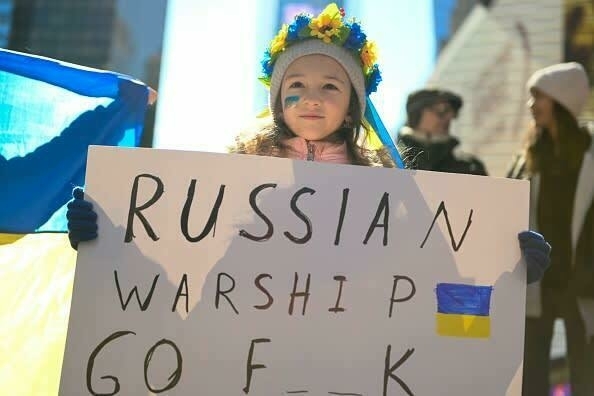
The war has been marked by other similar scenes of defiance reminiscent of Ripyn’s painting. Zelenskyy displayed the same fiery spirit, telling world leaders who’d urged him to evacuate from Kyiv that he needed “ammunition, not a ride.”
In 2023, French artist Emeric Lhuisette recreated the painting “Zaporozhian Cossacks Write a Letter to the Turkish Sultan” with a photograph of Ukrainian soldiers.
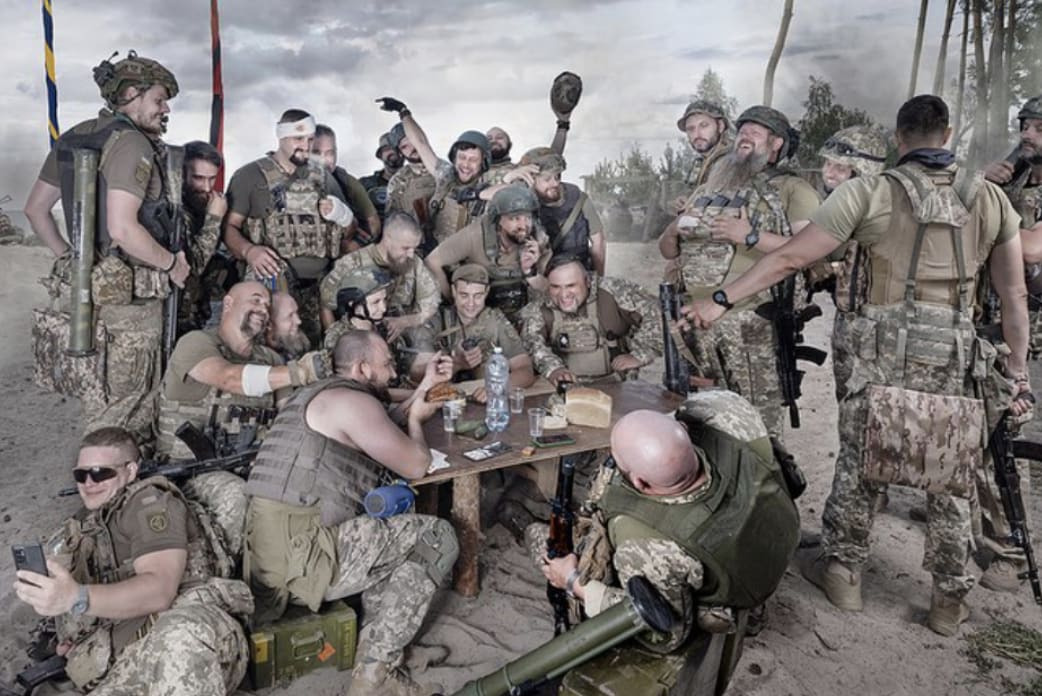
Today, the Cossack spirit lives on in Ukraine far beyond the reproduction of scenes from the painting. Ukrainian presidents still raise the mace — a weapon and symbol of power among the Cossacks — during their inauguration. Cossack symbols can also be seen on the emblems of the Ukrainian army's high command.
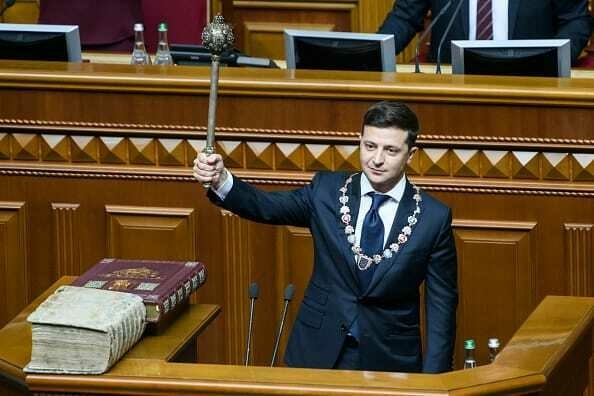
While Ukrainian rhetoric has now been polished a bit to suit Trump's position, with a shift from demanding “victory” to urging a “just peace,” Kyiv still stands firm on the issue of territory.
Even the threat of losing arms supplies and intelligence sharing has not been enough to force Ukrainian authorities to give up land.
Instead, Zelensky emphasized the importance of preserving Ukraine's pre-war borders, taking a page from the Cossacks’ playbook.
Rather than caving to mounting pressure, Zelensky said negotiations on the matter will be conducted exclusively with Putin, not other countries.
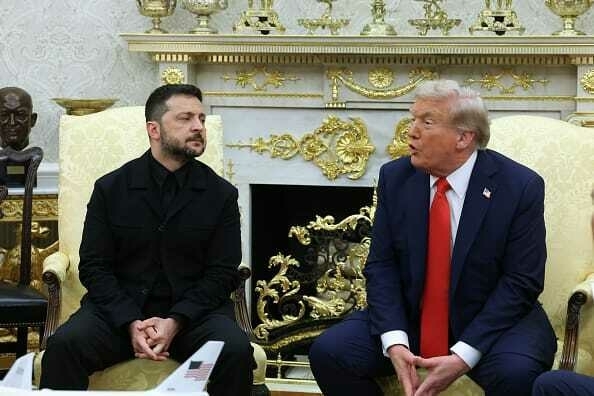
As Vadym sees it, it’s now more important than ever to make the Cossacks proud and embrace the insubmissive nature that Ukrainians have embodied for centuries.
Be it a sultan or an authoritarian ruler next door, the whole world can see that Ukrainians will stare down death before surrendering their land to anybody.
Editor’s Note:
With the so-called ‘peace process’ underway, Ukraine’s defiant stance against Russia is center stage. So we wanted to dig deep into history to explain where it all originates.
We have a print of ‘The Reply of the Zaporizhzhian Cossacks’ in our office, because it represents our ethos: to speak truth to power, and to tell off those who seek not to build or collaborate but to seize and steal.
We need your help to keep doing that. Upgrade today to get access to all our work!
NEWS OF THE DAY:
By: Clara Preve
TRUMP EXTENDS DEADLINE FOR RUSSIA SANCTIONS: Trump extended the deadline for sanctions against Russia by “a couple of weeks” after urging Putin and Zelenskyy to meet for negotiations. He said he would make a “very important decision” within that timeframe on whether to impose “massive sanctions, massive tariffs, or both” — or to withdraw from the peace process altogether.
His comments come as no progress has been made toward the bilateral meeting Washington has been pushing for. Trump has repeatedly delayed sanctions for months, while Putin managed to stall the U.S. leader with the Alaska summit.
UKRAINE ALLIES PLANNING SECURITY GUARANTEES: U.S. Secretary of State Rubio and Ukrainian presidential chief of staff Andriy Yermak are negotiating security guarantees for Ukraine, with a plan expected by the end of next week.
National security advisors for the U.K., France, Germany, Italy, and Finland are also participating.
Their talks coincided with NATO Secretary General Mark Rutte’s visit to Kyiv. Rutte said Ukraine’s allies are working on guarantees “at such a level that Vladimir Vladimirovich Putin, sitting in Moscow, will never try to attack Ukraine again.”
He added that the agreement will rest on two pillars: bolstering Ukraine’s military capabilities and securing long-term commitments to deter future Russian aggression.
PUTIN SAYS US-RUSSIA RELATIONS RESTORING: Putin said Friday there was “light at the end of the tunnel” in Russia-U.S. relations, following what he called a “very good, meaningful and frank meeting in Alaska” last week. He added that the two countries are now discussing joint projects in the Arctic and Alaska.
He stressed that the next steps depend on Trump, but expressed confidence that the U.S. president’s “leadership qualities” are a “good guarantee” that ties between the two nations will be restored.
Putin trip to Alaska ended a four year period of isolation by Western leaders over the invasion of Ukraine.
DOG OF WAR:
Today’s Dog of War is Druzhok. Nastia and Zoriana first met him at their friend’s grandparents’ home in the Khmelnytskyy region, where they had come to celebrate a birthday and spend time with the family.
After the long trip, Druzhok was the very first to greet them!
Stay safe out there.
Best,
Nastia




